Akutaq – Eskimo ice cream
Living traditional Arctic life in the polar region? If so, you probably won’t have much dairy around. But that never stopped the Eskimos/Inuits from making ice cream! Read more about their traditional “Akutaq”, largely based on whipped fat and berries. And while it is true that Akutaq in some circumstances even can contain fish flakes, today’s recipe will stick to blueberries 😉 .
Akutaq, or One mixeth what one haveth
Cama-ihi!
That would be “Hello (good to see you)!” – at least in central Yup’ik. Yup’ik belongs to the Eskimo-Aleut language family, and many consider it to be one of the most complicated languages that exist. Its word “Akutaq” (roughly pronounciated as “Ah-goo-DUCK”) means “something mixed/mix them together”. The word also exists in many regional variations (“agutak”, “agutaq”, “aqutaq”, “ackutuk” …). And while Akutaq often is associated with the Alaskan region, the same (or very similar) type of ‘ice cream’ also exists in the wider region (in the Russian far east, for example, a very similar dish is called Tolkusha).
Akutaq is, indeed, something mixed, and mainly builds on the philosophy of using what you have available and make something sweet and palatable out of it. In that sense, it would seem that pretty much anything could go into the dish – adding de-boned cooked fish flakes is one classic formula, and other recipes call for the adding of rice. Still others mention the inclusion of roots and/or meat.
But we will look into the more decidedly sweet Akutaqs, where different types of berries (mainly blueberries and cranberries) traditionally make up the main flavour. Drawing upon original (yet somewhat modernised) recipes, the one I will present below will replace the fish flakes with some instant mashed potato powder.
If you would like to come closer to the fish flake-tradition without actually incorporating any fish flakes, you may try eating your Akutaq together with some smoked fish on the side.
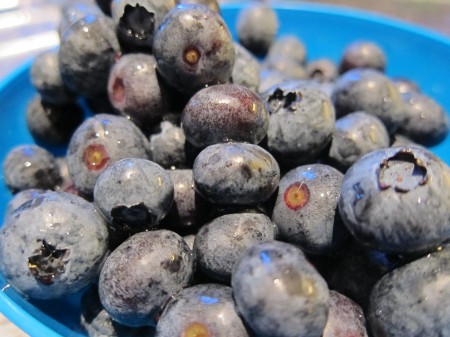
Blueberries – one of the typical berries that tend to flavour Akutaq
[
Sugar was traditionally not a self-standing ingredient in Akutaq (hard to come by in the Arctic regions) so sweetness was provided by the berries. The berries were traditionally picked in the summer and then preserved for use during the frozen months. Ice-cold water and snow were available in abundance. Leaving aside the possible inclusion of fish flakes, all we would need now in order to make ice cream would be fat. Fat is important for the stability and consistency of any ice cream, and in standard ice creams we would typically count on the cream from cows to provide the necessary fat.
The fat of the land … or the sea
But in the polar regions, dairy was traditionally not part of the normal diet (try raising cattle in frozen environments). So the fat was taken from other, more available sources – such as seals, reindeers, caribous, walruses, mooses and whales. A mixture of the fats (including tallow, blubber, and oils) of the animals used provided the ice cream base, with the Akutaq gaining different taste and feel depending on the specific choice of fat and animal(s). I remember having read somewhere that well-aged yellow fat often was preferred over fresh fat, because it had more flavour and whipped up in a fluffier way.

The fat of the seal could well end up as Akutaq
(Artwork by Gordon Miller / The Canadian Encyclopedia.com)
Modern Akutaq
While animal fats and oils certainly were the original fats used, the world evolved also in the polar region. Akutaq of today is usually based on solid vegetable shortenings, such as Crisco. Other more modern additions to the traditional recipes are sugar and instant mashed potato powder. And while the dish traditionally is hand-stirred, you may well use a whisk these days.
Making Akutaq – step by step
Having looked through several different recipes, ranging from the very traditional (seal oil, reindeer fat, snow, berries) to the more modern (vegetable shortening, sugar, berries), I attempted a formula combining old and new elements. Since the preparation of Akutaq is relatively straightforward, however, I make no claim that this recipe breaks any new ground – in fact, I wholly assume that the combination already exists and is being used.
With regard to the fat, I decided to bow to the original traditions and use animal fat (lard). As noted, vegetable shortening is, however, a commonly used replacement these days – in other words, you would still end up with something ‘authentic’ even if you forego the animal fat. If you with vegetable shortening, however, you may also want to add some oil in case the “whisking the fat”-phase does not produce the intended “white and fluffy” result (even animal-fat Akutaq recipes often call for the inclusion of seal-oil and the likes, by the way).
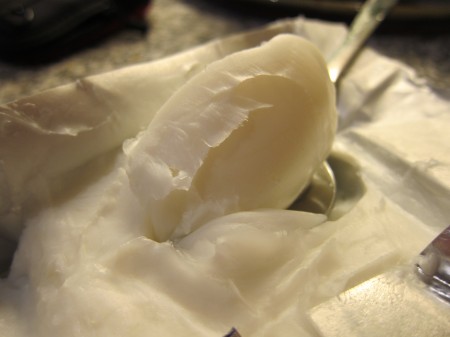
White as snow … but this is, in fact, lard
The lard I used was basically wet-rendered, flavourless pig fat, with a consistency similar to softened butter.
The first step is to whisk the lard together with the sugar and some water. Since the sugar won’t dissolve as easily as when combined with liquids, it is advisable to use powdered or extra fine-grained sugar to avoid a consistency with gritty sugar crystals.
Whisk until the lard-mixture has become white and fluffy. Now add the instant mashed potato powder and continue whisking, possibly adding a little more water if deemed necessary. Then fold in the berries, about 100 ml / 1/2 cup at a time.
Congratulations – you have now created Akutaq!
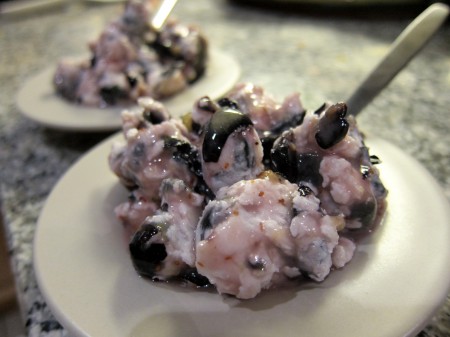
Akutaq may not be for everyone but it was great fun to test! And one must truly admire the inventiveness behind an ice cream mainly based on fat.
Let me also tell you that the ice cream actually tastes much nicer than the words “ice cream made up of fat” may lead you to believe! After all, dairy cream is, to a large extent, also “fat”. And while there are different fats with different flavours, the one I used was very neutral and basically left the flavouring to the sugar and the blueberries. So, my Akutaq ended up with a distinct sweetened blueberry-flavour embedded in the softness of the fat.
So while I would assume that followers of Low Carb-High Fat-diets might be particularly interested in giving Akutaq a go, I would advise anyone interested in an ice cream-experience out of the ordinary to put any negative presumptions about fat aside and give Akutaq a try!
- 3 tbsp instant mashed potato powder
- 100 ml lard (alternatively, solid vegetable shortening; like Crisco)
- 100 ml sugar (preferably fine-grained or powdered)
- about 50 ml ice-cold water
- 400 ml blueberries
- Beat/whisk lard and sugar and a little water until white and fluffy.
- Whisk in the instant mashed potato powder.
- Fold in the berries, about 100 ml (1/2 cup) at a time.
- Enjoy while cold (or put in the freezer for extra chilling).
Think no-one is making Akutaq any longer? Think again – and check out this very inspirational film where Elizabeth Soosuk shows how it’s done by a local, while also recalling how her grandmother used to make it:


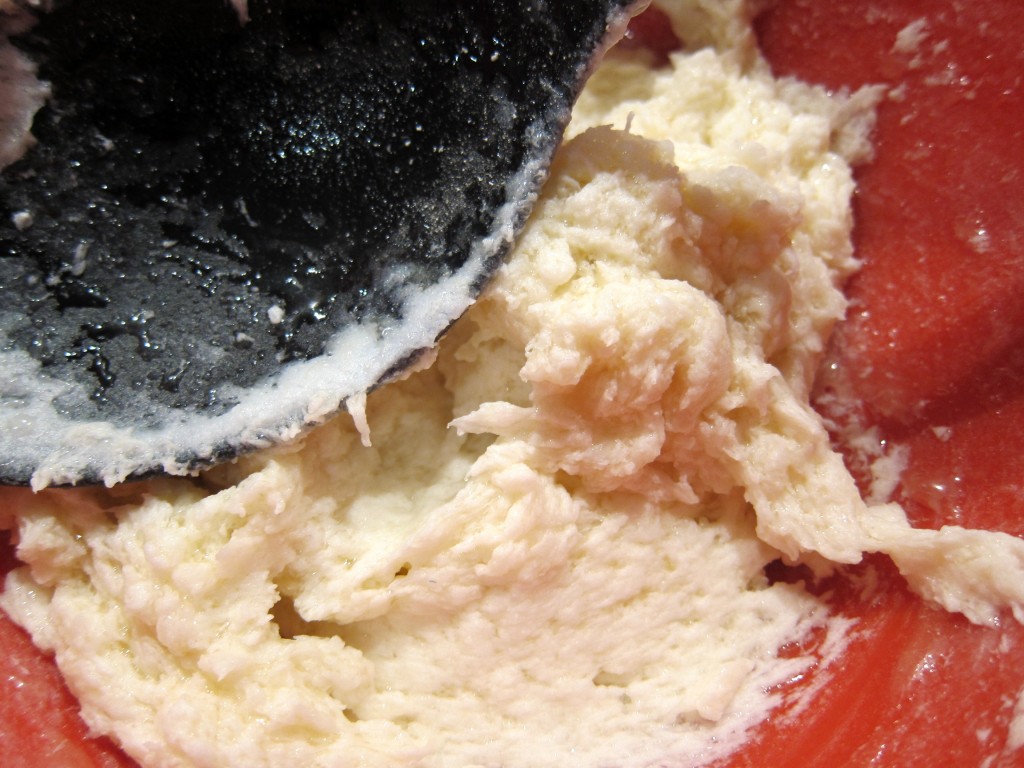
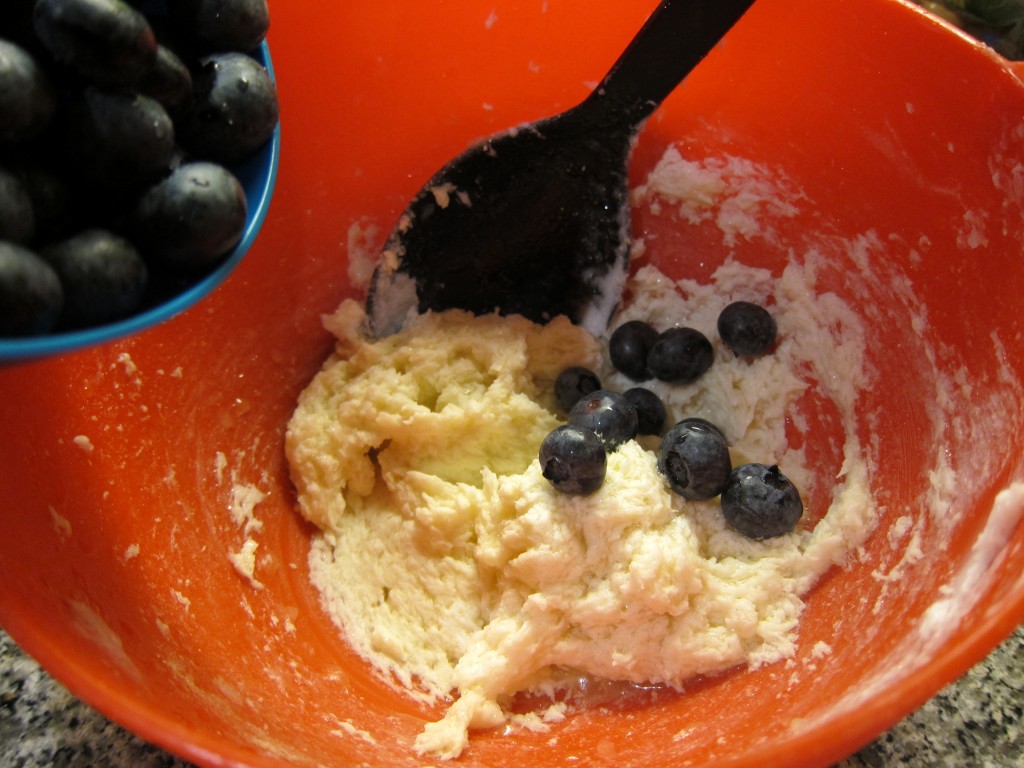
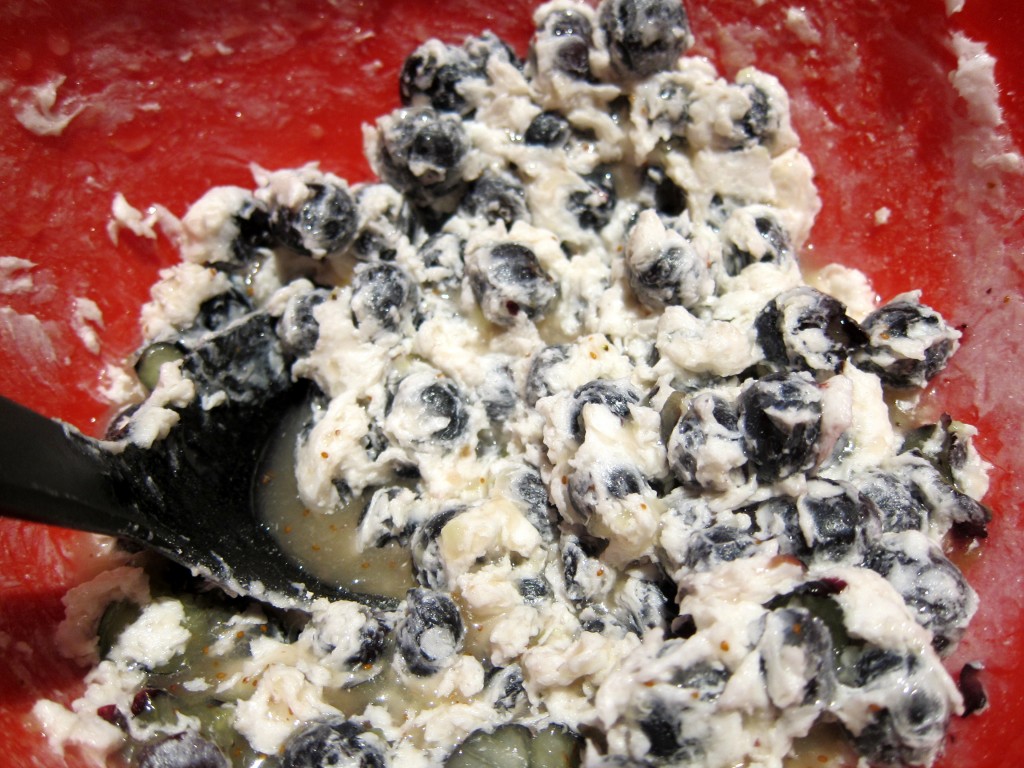
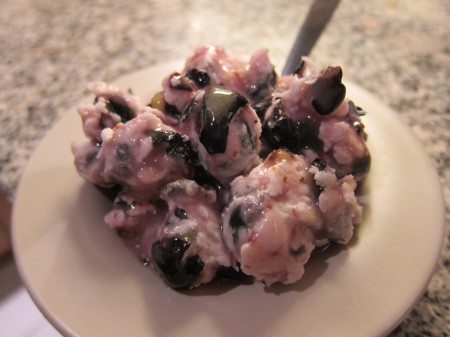

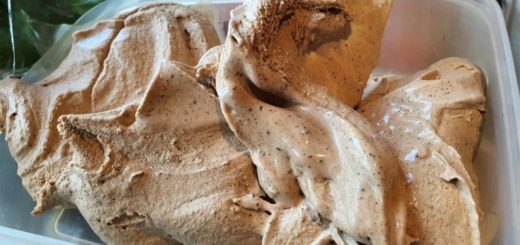
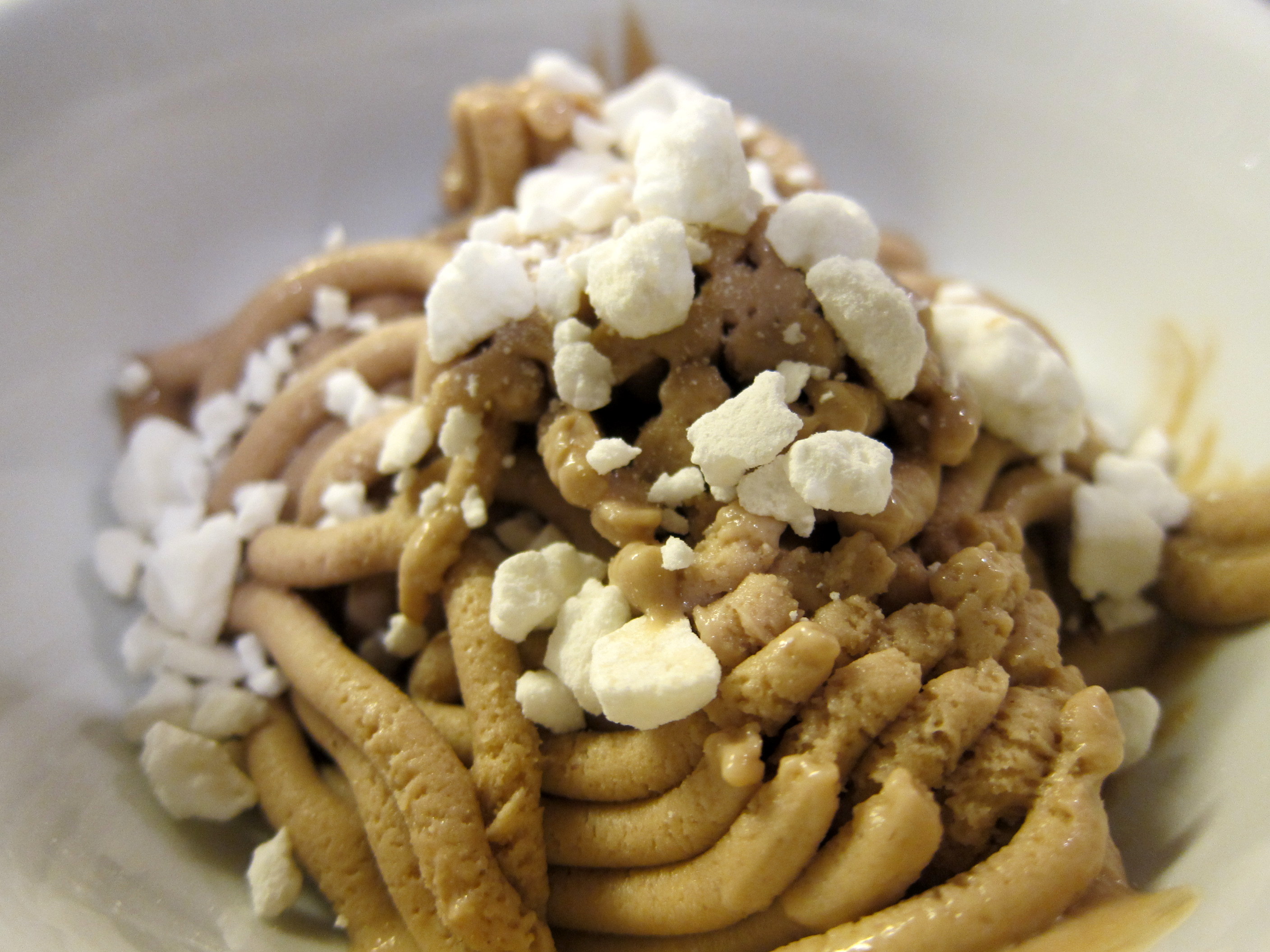
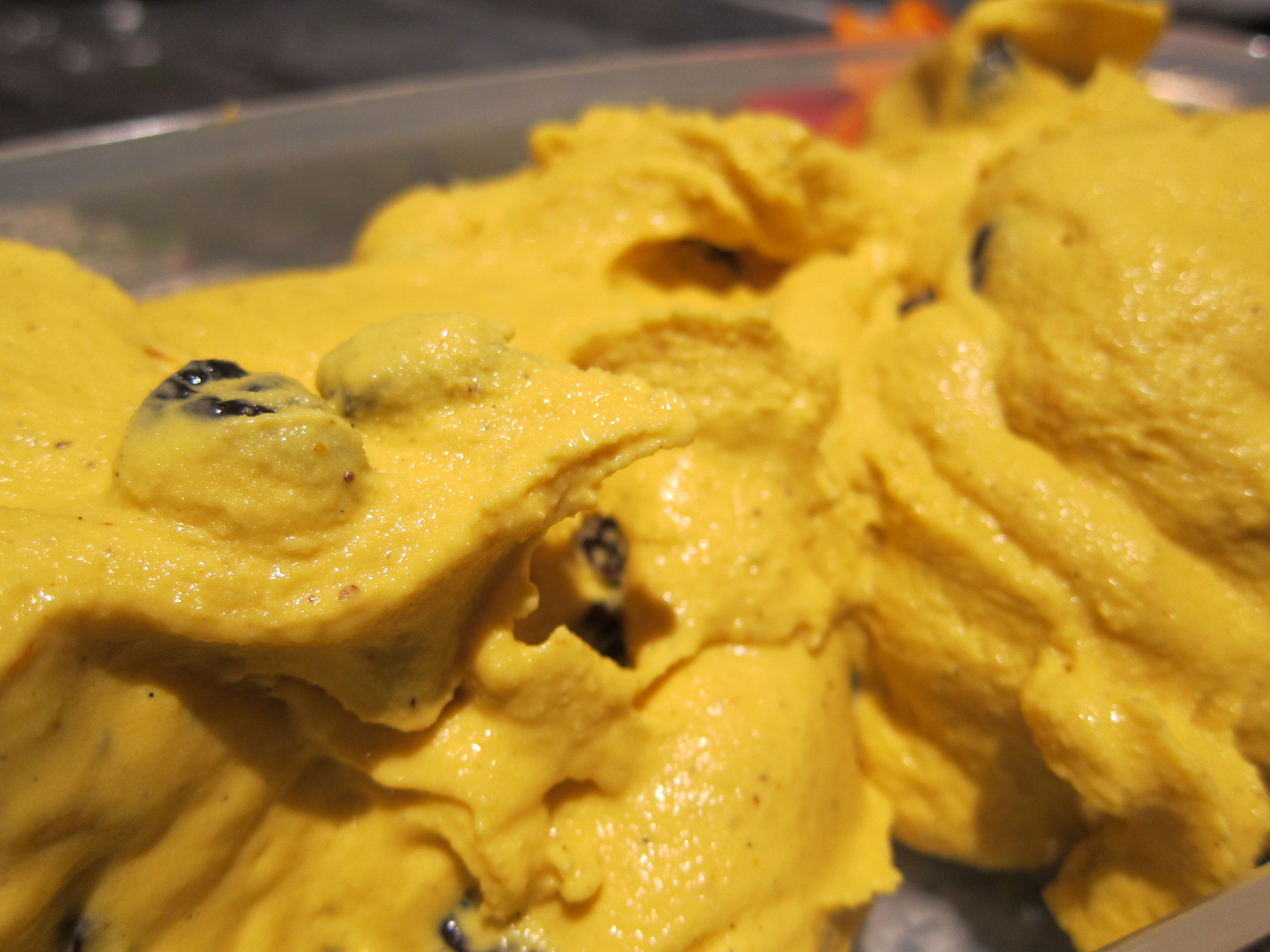


Your recipe is wrong. You used too much lard and you didn’t even whip it until it’s light and fluffy like whipped cream. You had too much lard in porportion to the berries. I’ve eaten akutaq all my life and I wouldn’t even touch yours. What a gross misrepresentation of a great dessert!
Dear Shel Marie,
Thanks for your input: If I may take the chance and benefit from your own akutaq-experience, what kind of proportions between lard/fat and berries would you suggest to use?
Okay. I live in Alaska and I’ve had real authentic akutaq on many occasions. I was craving it like crazy so i looked this recipe up.
It was extremely pasty and greasy.
Not sure what went wrong, but it looks like I’ll just have to have someone make me the real stuff.
Also in your picture the berries looked like almost whole berries.
Akutaq I get up here looks like the berries were mashed before even being mixed in, making the whole thing smooth and fluffy.
Hi Ptarus!
It would actually be great if you could find some local expert – I’ve never been fortunatly enough to have “authentic” aquataq myself (although I hear that there are plenty of varieties when it comes to actual recipes) myself, so if you could find out what possibly should be done/not done to prepare it “right”, I’d be super-interested in hearing back from you!
Making these today! They look so yummy! Hopefully I will get back & post how they turned out. Thank you for this recipe.
Ohhh, that looks delicious! I’m definitely going to try it. Thanks!
Hi there,
As someone that can’t eat dairy or coconut( a common substitute in most non dairy Ice creams) I’d like to give this a try. I tried to make potato ice cream years ago but it was awful, so have always thought I’d like to tweak it and try again one day .
Do you think it could work using mashed potato as I don’t know that I’d be able to use the instant mash stuff ( I have quite a few food intolerances)?
Would love to hear your thoughts.
Hi there!
Best of luck experimenting: I think you might have more success using, for example, some starch (corn starch, arrowroot, tapioca flour, rice starch, potato flour …) as substitute. The point of using instant mashed potato powder is probably more aimed to provide some (absorbing) stabilisation to the mix than a touch of potato as such 🙂
That’s interesting about avoiding gritty sugar crystals. A friend of mine whose mother was Alaskan native always waxes poetic about the crunch of the sugar and the ice crystals. He wouldn’t like it with a smooth consistency. Maybe different tribes or families make it differently.